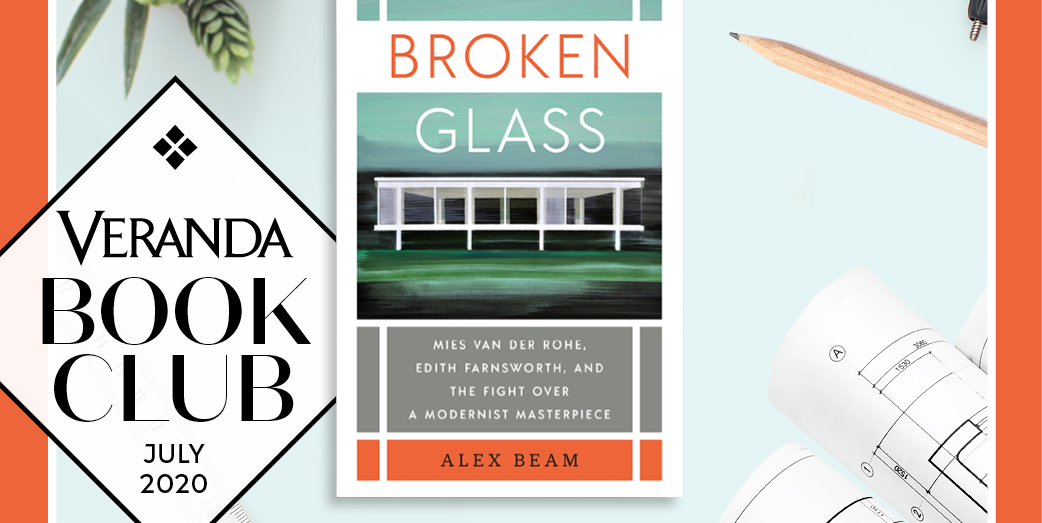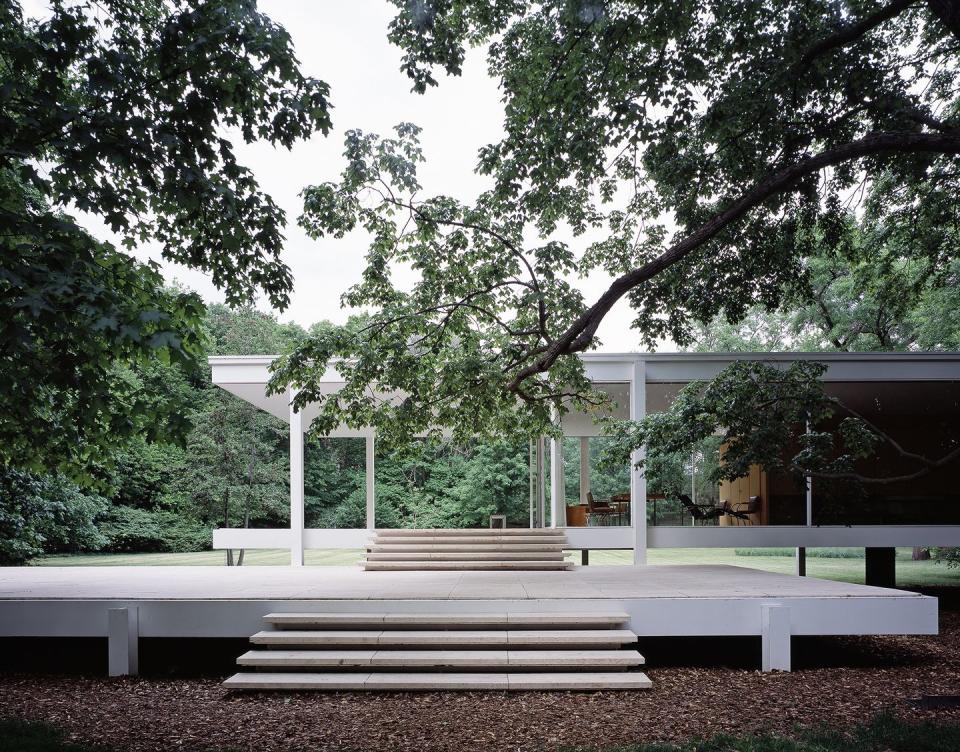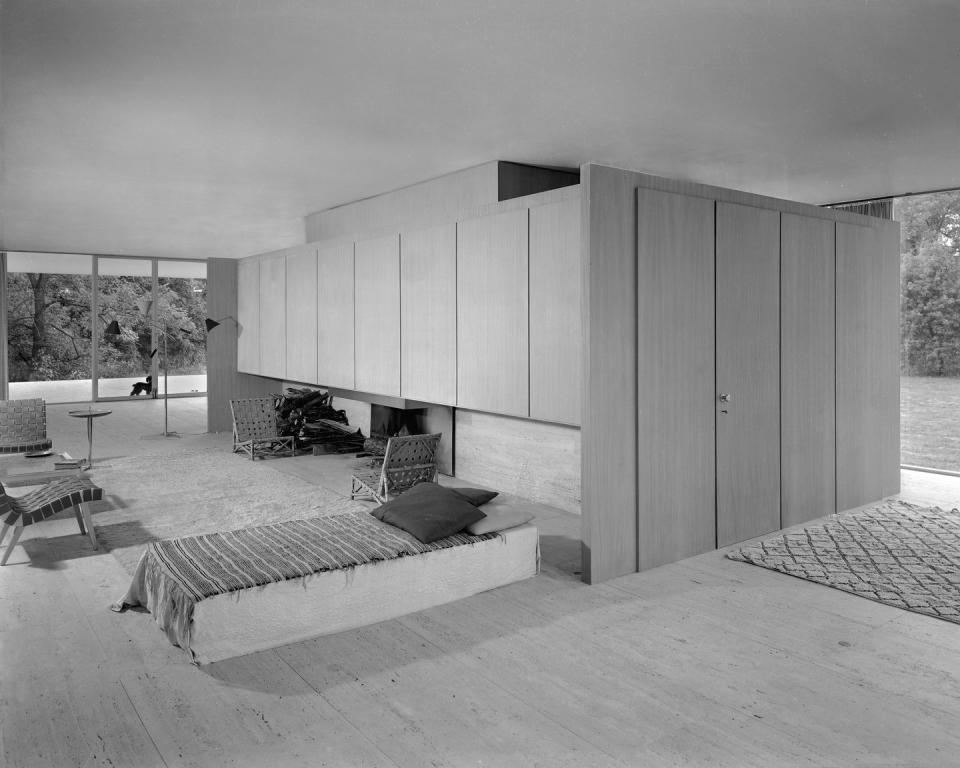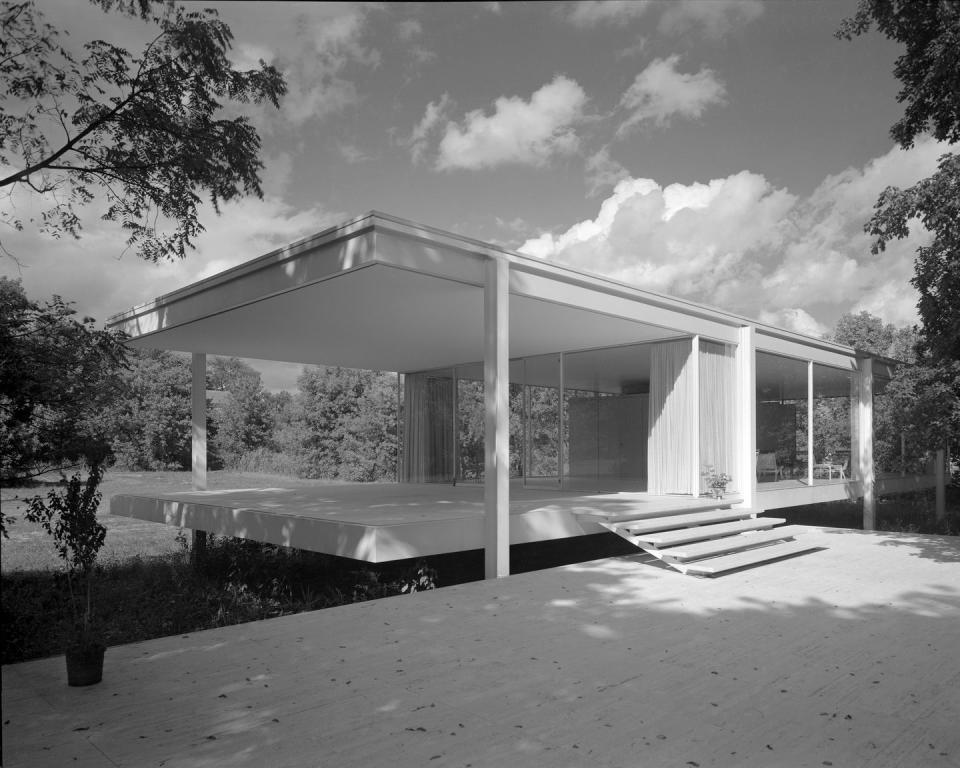VERANDA's July Book Club Selection is "Broken Glass"

Welcome to the VERANDA Sip & Read Book Club! Each month, we dive in to a book and offer exclusive conversations with the authors behind each tale over on Instagram, along with a perfectly matched cocktail. Our third pick is Alex Beam's Broken Glass, which chronicles the creation of and, later, trial involving a modernist home created by Mies van der Rohe for Edith Farnsworth. Get caught up on our past book club selections here.
It was 1945, and Chicago medical researcher and poet Edith Farnsworth was about to meet German architect Mies van der Rohe at a party. The two would go on to have "six years of intense amity," as author Alex Beam succinctly describes in his book chronicling their tumultuous relationship and the project at the center of it all— the Farnsworth House—in Broken Glass.

Situated on a beautiful plot of prairie-esque land outside Chicago beside the Fox River, the home was completed in 1951. Beam leads us through both Mies and Edith's upbringings, right up to the moment the pair meet at a fateful dinner party in 1945, when Edith asks if he has an associate who would be interested in working on a pied-à-terre for her outside the city. To her delight, Mies volunteers himself, a response that felt like a "a storm, a flood or other act of God" to Edith.
What follows is a story of wine-drenched picnics in the bucolic meadow (site of the soon-to-be glass-and-steel structure, a swift dalliance, and the vitriol (both public and private) and legal proceedings that ensued.
The troubles began almost from the start. It took more than two years to begin construction on Farnsworth House, even with the existence of a sketch and two wood models. What Edith originally thought would be built for $10,000 at the time (roughly $144,000 with inflation) soon shot to $70,000 (about one million dollars today). Edith lamented, "How can I get Mies to do my house? Every year it's postponed, he says he's too busy. That man, I can't get him to do anything, I love the house, I want it."
By 1949, construction had begun and decisions were being made—and questioned from the start. Mies believed one should treat clients "as children," while Edith "proved to be both Mies's client and a patron. That she thought of herself as Mies's friend and soul mate first, client second, and patron not at all, was becoming a source of friction," Beam explains.

This friction eventually comes to a boil, of course, and what unfolds is a tale of a modernist home plagued by challenges (a leaking roof, ballooning costs, a complete lack of privacy) and the relationship that surrounds it. Edith inserts herself in the running feud between Mies and Frank Lloyd Wright, and in turn, Mies sues her for lack of payment.

Carefully researched and drawing from court records, interviews, and Edith's unpublished memoir, Beam presents a portrait of a friendship and professional relationship that birthed a modern architectural marvel while avoiding the temptation to become bogged down in the gossipy, scandalous nature of the actors involved. What's unearthed in the pages is a thoughtful biography of the messy creation of a masterpiece, and one well worth a read.
VERANDA SIP & READ BOOK CLUB FOR JULY 2020
Selection: Broken Glass by Alex Beam (available via local booksellers, Amazon, or Book Shop)
Start reading with us this July.
Send Alex your questions! July 21 and 22 via VERANDA's Instagram Stories.
Tune in as Alex answers your questions and chats about Broken Glass on July 31.
You Might Also Like

